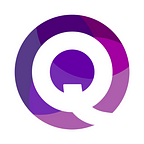Female Financial Literacy in Southeast Asia
My partner invests my money for me.
I still save most of my money in the bank.
Investing is just too confusing so I have not started.
These are conversations we’ve heard frequently from successful, 20–30 year old female professionals women who consider themselves independent in many ways. In an age which celebrates female empowerment often through female financial independence, we challenge this definition to go further to include financial literacy — the confidence and knowledge of how to manage and grow one’s own money.
With the rise of companies such as Ellevest and The New Savvy, which aim to close the gender investing gap, we seem to be at yet another potential turning point for female financial literacy. They empower women to “achieve financial happiness” (TNS), and to “close the gender investing gap” (Ellevest).
So to what extent have such companies impacted the way women think about money and investing, and what do women really want when it comes to finance?
To answer this, we decided to turn to how women search about finance, and the fintech tools they seek out. Here’s the top 5 things we found:
In ASEAN, The Philippines is the only country where women outnumber men in interest in financial topics (55% to 45%)
Grant Thornton reported that the Philippines ranks first for the proportion of women holding senior management roles in Southeast Asia and fifth globally, with 37% of such roles occupied by women.
We found that Filipino women are specifically searching to learn how to invest, and about small business entrepreneurship — a hopeful correlation between career progression and independence in financial management in the Philippines.
Currently, the need to earn money still outranks banking and investment requirements for women
No surprises here — females focus primarily on earning money and achieving financial stability, as opposed to investing.
For example, 34% of finance searches by Vietnamese women is about employment. Even though Vietnam has one of the highest rates of female employment in South East Asia, many of these roles are limited to informal, ad hoc jobs. Women therefore frequently search for home-based, online forms of income that require minimal professional expertise.
25 to 35 year old women are the most active users of fintech
Maria Gracheva, head of the Russian online payment system Yandex.Money, said, “this shift to Fintech involves more women than men”, highlighting the potential for Fintech to bridge the gender gap both for careers as well as financial management.
We saw this across Southeast Asia, where younger women are actively using fintech for financial transactions, followed by on-the-go budgeting, with an emerging interest in accessible investment fintech options.
In Thailand, there is growing older female interest in using fintech for investments.
25% of financial queries by Thai women are about investments — and these are definitely not basic. Thai women actively seek updates on the latest financial news and the performances of particular stocks, indicating relatively advanced knowledge.
Interestingly, the 55–64 year old female segment makes up 32% of interest in fintech investment tools — perhaps mothers are learning how to invest alongside their daughters?
Mainstream banking advertising communicates “be a winner”, while female-friendly finance content says “love yourself”
We wanted to understand how mainstream banking might be communicating to women differently from the emerging female-friendly finance companies, like Ellevest and The New Savvy.
After running 8800 content pieces across 27 brands, Quilt.AI’s culture AI indicated key differences in visual styles, lifestyles depicted, moods, and colour usage in the two sets.
Female-friendly content contains distinctively less cues of traditional advertising, including an absence of logos, stock images, and poster formats. They also highlighted a much more aesthetic lifestyle, featuring more interior design and plants (!) than mainstream banking.
Most significantly, while mainstream banking encourages consumers to think about money management for acquisition and consumption — “being a winner”, female-friendly content positions money management as a form of “self-love”, encouraging confidence, independence, and ambition in women.
Want to know more insights? Email anurag.banerjee@quilt.ai to receive the full report we are releasing on International Women’s Day.
Read more stories on Quilt.AI.
